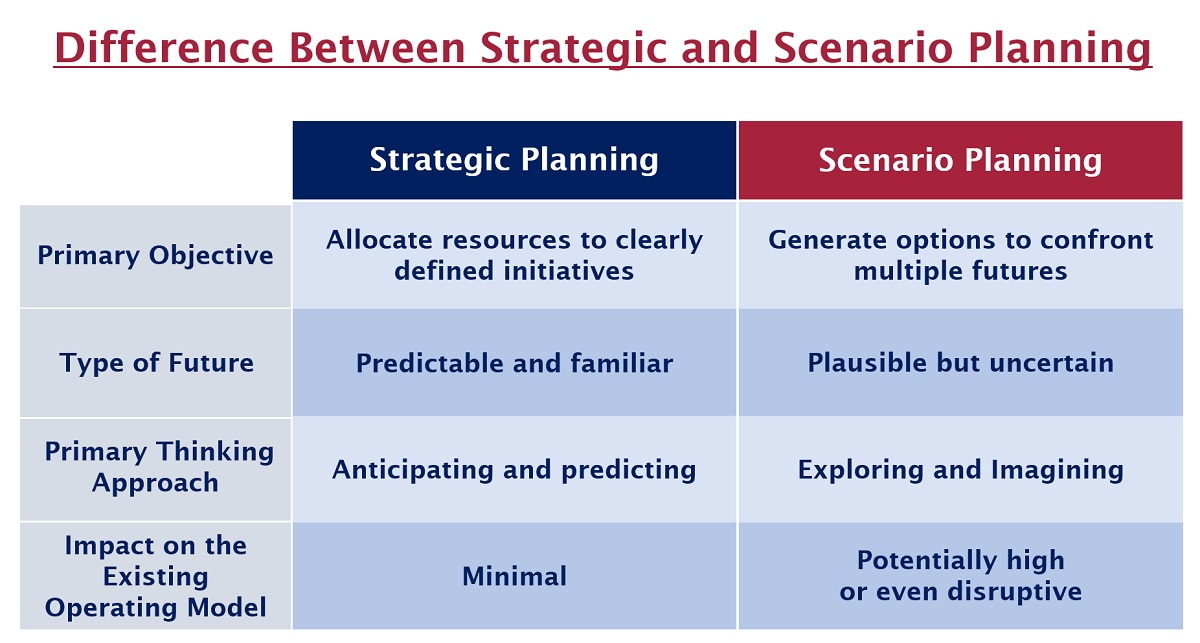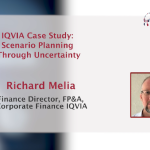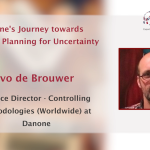In this article, we will explore why and how Scenario Planning can significantly benefit financial forecasting...

Introduction: Scenario Planning Taking Centre Stage
The term Scenario Planning was first popularised by Herman Kahn and was used to imagine what could happen in the event of a nuclear war, a future without precedent. The concept was subsequently applied successfully by the corporate world since the 1970s. Today, the world faces significant changes that will have a defined impact on how a business operates in the future. Examples include climate change, sustainable living, resource scarcity, rising inequality, the relevance of education models, the fragility of finance systems, and the pace of technological advances. Scenario Planning becomes necessary rather than optional in such a complex and uncertain environment.
The Differences Between Strategic Planning and Scenario Planning
Where today’s performance is a result of decisions made in the past, tomorrow’s performance will be a result of decisions taken today about events yet to unfold. In this respect, Strategic Planning and Scenario Planning are similar in dealing with the future.

Figure 1
Therefore, with an increased rate of change in the business environment and heightened challenges in making confident predictions, Scenario Planning is the better solution to help deliver useful plans. Its primary objective is highlighting the actions required to confront a particular scenario. It prepares the organisation today for the very different environment of tomorrow and helps organisations become more resilient.
5 Challenges Associated with Scenario Planning
1. It demands different skills and responsibilities.
Teams should be very perceptive to the outside environment, be able to think critically and have the power to make decisions and act. Compiling the right team or group for this exercise can be challenging.
2. The development of relevant scenarios is a mix of both creative and analytical skills.
Imagination is required, along with the core ability to model scenario outcomes. The latter is enabled by a significant improvement in analytical tools, especially stochastic ones. Imagination is more of a challenge since conjuring up mental models of how things should be is strenuous.
3. Scenario Planning is about learning.
It requires learning by accommodation rather than assimilation. In other words, team members need an open mind to look for insights and connections that do not fit the existing experience. This, again, is easier said than done when an organisation is under operational pressure to deliver in the short term.
4. A scenario must be relevant, plausible and materially different from the current path the business is tracking.
It cannot be a fantasy, but it also cannot be a simple sensitivity to the existing plan since this will not force the necessary discussion to create fundamental organisational change. The challenge here is finding ways to avoid making scenarios overly complicated.
5. Unlike other planning approaches, the Scenario Planning process has to be immersive and experiential.
It cannot just be an intellectual exercise. In fact, many elements outside of the existing organisation’s history and memory need to be considered. It helps to create fictional representations of what a scenario would look like for all relevant stakeholders. The challenge here is finding the skills and time required.
Summary: Scenario Planning Is a Way to Make Organisations More Resilient
FP&A can play a positive role in becoming an enabler and a trusted advisor to the business by working closely with the leadership teams to overcome some of the challenges mentioned. If done well, Scenario Planning can lead to an ingrained imagination where organisations learn what can help them manage change continuously and exist in harmony with an ever-changing environment.
It can help create an organisation that is far more resilient than before and allows it to thrive in the long term. Unfortunately, due to these challenges, Scenario Planning is often seen as a luxury where the costs outweigh the tangible benefits to an organisation’s decision-making process. In the current uncertain business environment, that is a missed opportunity.
This article was first published on the Unit4/Prevero blog.
Subscribe to
FP&A Trends Digest

We will regularly update you on the latest trends and developments in FP&A. Take the opportunity to have articles written by finance thought leaders delivered directly to your inbox; watch compelling webinars; connect with like-minded professionals; and become a part of our global community.







